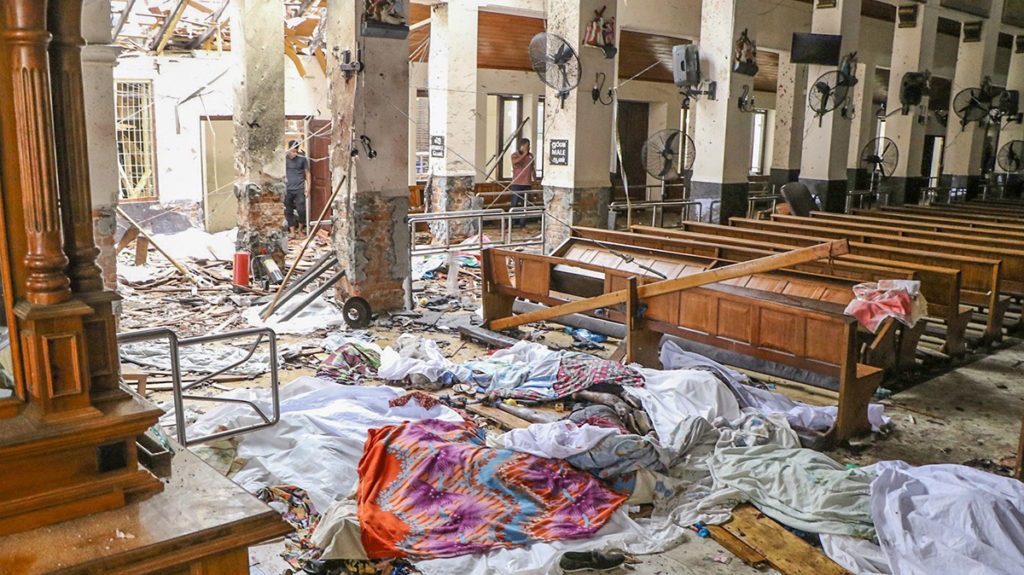
Monday
Often, following mass killings such as occurred yesterday in Sri Lanka, I turn to Beowulf since few works understand the horrors of internecine violence so well. Beowulf was already on my mind as friends have been sending me word of new discoveries about the poem, and now we see killer trolls once again on the rampage.
The first half of the poem is about monsters that attack a nation from within. As the poet describes it, King Hrothgar has built a grand hall strong enough to deter any external foe, but the Grendels are an internal problem. I think of Grendel as a disaffected warrior or social misfit and his mother as a warrior unhinged by grief. The first is fueled by murderous resentment, the second by the vengeful urge to make others share her pain.
The Beowulf poet knew such violence intimately from the blood feuds that tore Anglo-Saxon societies apart. It is significant that Grendel and his mother are descendants of Cain.
The poem is particularly applicable to America’s problem with internal violence—we have little to fear from external foes—but it fits any country torn by civil strife. Many in Sri Lanka must be thinking, along with the Danish king Hrothgar, “Rest, what is rest? Sorrow has returned.”
The literary debate concerns whether or not the poem is a compilation of two different poems, one involving the trolls and one the dragon. Recent computer research supports Tolkien’s theory of a single poet, and that’s certainly my sense. As I see it, troll violence and dragon violence are connected, the first a representation of angry warriors, the second of avaricious kings. Bad leaders and a discontented populace make for a toxic combination.
Those who understand Sri Lankan society will know better than I do whether Beowulf provides a way forward. His response to violence is maintaining a firm grip, staying connected with foundational values, and undertaking a collective approach to problem solving. Courage and commitment to the greater good are also key.
Before it looks forward, however, Sri Lanka must grieve, and here also the poem can help. After Beowulf dies, for instance, we have these powerful images of mourning:
On a height they kindled the hughest of all
funeral fires; fumes of woodsmoke
billowed darkly up, the blaze roared
and drowned out their weeping, wind died down
and flames wrought havoc in the hot bone-house,
burning it to the core. They were disconsolate
and wailed aloud for their lord’s decease.
A Geat woman too sang out in grief;
with hair bound up, she unburdened herself
of her worst fears, a wild litany
of nightmare and lament…
The key will be to what use Sri Lankans put their grief. For Grendel’s Mother, grief leads to more slaughter while King Hrethel, who loses a son, sinks into a depression from which he never emerges. The poet represents both as socially destructive.
Beowulf, by contrast, has the courage to face up to grief, jumping in the dark waters and finding the warrior’s sword—which is to say, his higher purpose. When he emerges, the monsters have vanished.
It’s not exactly Jesus’s Easter message that love is more powerful than death. Nevertheless, the poet understands that responding to violence with more violence leads to non-stop violence.
Further thought: If Sri Lankan authorities are correct that the Easter massacres were a response to the New Zealand mosque massacre, then we are are definitely in Grendel’s Mother blood feud territory. The back-and-forth killing pervades the entire poem so that, as an aged king looking back over the long string of deaths, Beowulf falls into a dragon-like depression (like King Hrethel). It’s easy to succumb to his pessimism.
What saves him is youth, a member of the next generation convincing him to stand strong once again. It’s a timely reminder.

